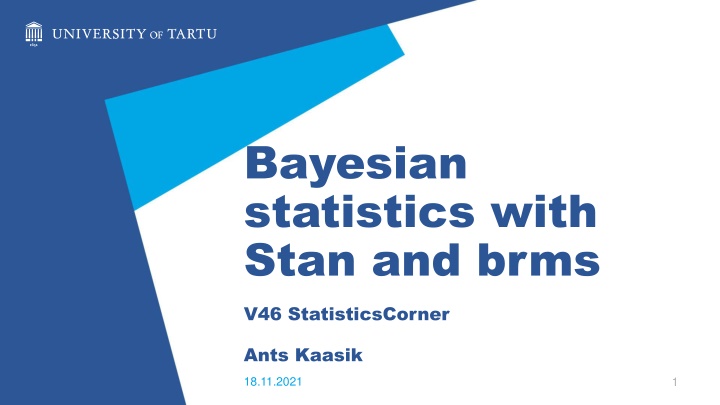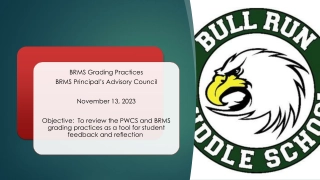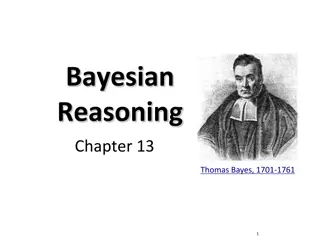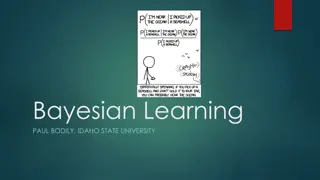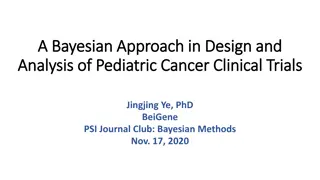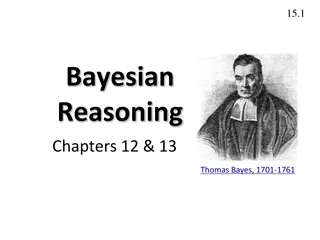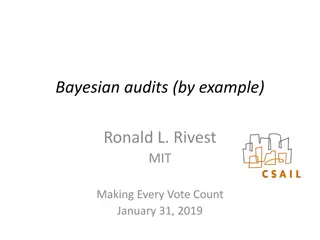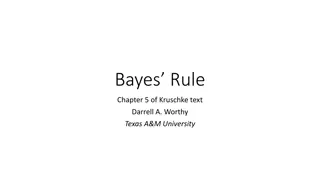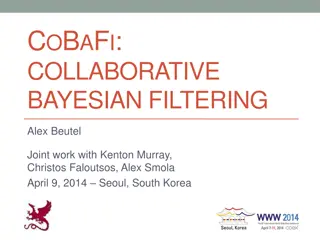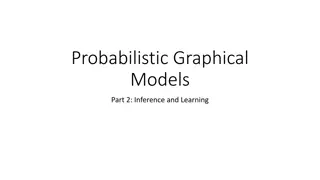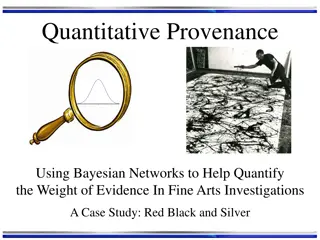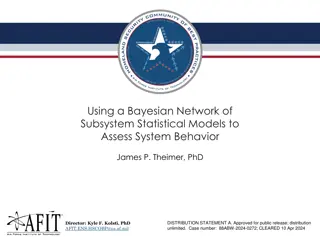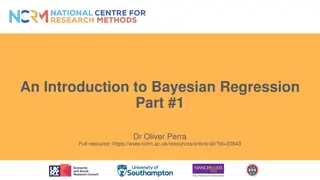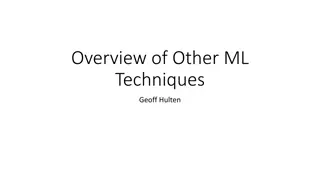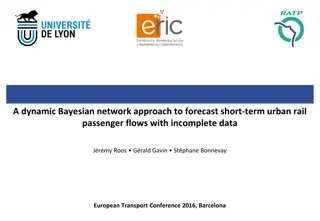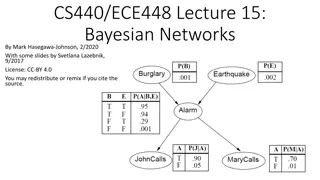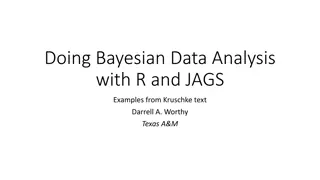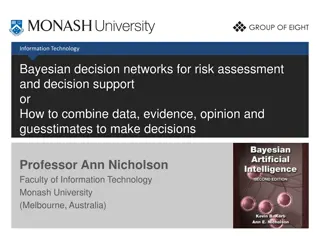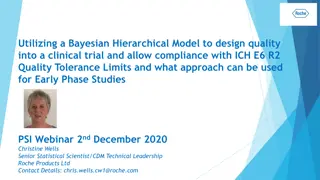Bayesian Statistics with Stan and brms: A Feasible Approach to Inference
Bayesian inference and how it can be applied feasibly in research using Stan and brms. Explore the concept of giving prior distributions to model parameters and obtaining posterior distributions. Learn about Markov Chain Monte Carlo (MCMC) simulation and Hamiltonian Monte Carlo (HMC) for faster convergence. Discover the versatility of brms in fitting various models with a wide range of distributions and modeling options in a multilevel context.
Download Presentation

Please find below an Image/Link to download the presentation.
The content on the website is provided AS IS for your information and personal use only. It may not be sold, licensed, or shared on other websites without obtaining consent from the author.If you encounter any issues during the download, it is possible that the publisher has removed the file from their server.
You are allowed to download the files provided on this website for personal or commercial use, subject to the condition that they are used lawfully. All files are the property of their respective owners.
The content on the website is provided AS IS for your information and personal use only. It may not be sold, licensed, or shared on other websites without obtaining consent from the author.
E N D
Presentation Transcript
Bayesian statistics with Stan and brms V46 StatisticsCorner Ants Kaasik 18.11.2021 1
My aim You know Bayesian inference exists. After the presentation you will also know that it is (now) completely feasible and if your research should include it then you know where to start. When reviewing a paper/watching a presentation you know what to look for and how to comprehend things. 2
Bayesian? In addition to the usual model choice (e.g. binomial glm, linear mixed model) we also give prior distributions to model parameters. This allows us to get as a result posterior distributions of the model parameters (i.e. level of plausible variation is already included in the result). 3
Too good to be true? Typically the posterior cannot be worked out analytically and one has to simulate from it but this can t be done directly but using Markov Chain Monte Carlo (MCMC; a simulation process that converges to the desired distribution). This means that potentially the convergence can be slow and the whole process very time- consuming (but also lets not compare apples and oranges). 4
Niche no more Developments in Hamiltonian Monte Carlo (HMC; a clever approach to make the convergence more rapid) mean that even models with large number of parameters can now be fitted fairly rapidly. Specialized software Stan can be used to use HMC but R package brms allows to use Stan indirectly using R modelling language. Many of the most often used models are available. 5
From the author A wide range of distributions and link functions are supported, allowing users to fit among others linear, robust linear, binomial, Poisson, survival, response times, ordinal, quantile, zero-inflated, hurdle, and even non- linear models all in a multilevel context. Further modeling options include autocorrelation of the response variable, user defined covariance structures, censored data, as well as meta-analytic standard errors. B rkner PC (2017). brms: An R Package for Bayesian Multilevel Models using Stan. Journal of Statistical Software, 80(1), 1 28 6
How does brms work? B rkner PC (2017). brms: An R Package for Bayesian Multilevel Models using Stan. Journal of Statistical Software, 80(1), 1 28 7
How do I work with brms? library(MASS) head(cabbages) Cult Date HeadWt VitC 1 c39 d16 2.5 51 2 c39 d16 2.2 55 3 c39 d16 3.1 45 4 c39 d16 4.3 42 5 c39 d16 2.5 53 6 c39 d16 4.3 50 8
How do I work with brms? (2) fit1 <- brm(formula = VitC~Cult*Date, data=cabbages, family = gaussian()) summary(fit1) 9
How do I work with brms? (3) conditional_effects(fit1) 10
How do I work with brms? (4) fit2 <- update(fit1, formula. = ~ . - Cult:Date) LOO(fit1,fit2) 11
How do I work with brms? (5) library(ade4) data(lizards) plot(matur.L~age.mat, data=lizards$traits) 12
How do I work with brms? (6) library(ape) puu <- read.tree(text=lizards$hprA) covmat <- ape::vcv.phylo(puu) lizards$traits$species <- rownames(lizards$traits) 13
How do I work with brms? (7) fit3 <- brm(matur.L ~ age.mat + (1|gr(species, cov = A)), data = lizards$traits, family = gaussian(), data2 = list(A = covmat), iter = 5000, warmup = 2000, control=list(adapt_delta=0.9995, max_treedepth=20)) 14
How do I work with brms? (8) plot(conditional_effects(fit3), points=T) 15
Why should I work with brms? We can fit some models that we would not be easily able to fit otherwise (e.g. phylogenetic GLMM). We can easily do posterior predictive checks to assess the model. 16
Pre-requirements See here: https://github.com/stan- dev/rstan/wiki/RStan-Getting-Started Nothing too complicated but some steps are also outside R environment. Final step is the installation of package brms in R. 17
Useful links/searches Stancon 2018 & 2020 (youtube) Bayesian workflow (https://arxiv.org/pdf/2011.01808.pdf) Generable (youtube channel) Learning Bayesian Statistics (podcast) Bayesian Data Analysis course (https://github.com/avehtari/BDA_course_Aalto) BDA3 book (http://www.stat.columbia.edu/~gelman/book/) Statistical rethinking course (youtube) Statistical rethinking with brms (https://bookdown.org/content/4857/) 18
Thank you! Questions? 19
